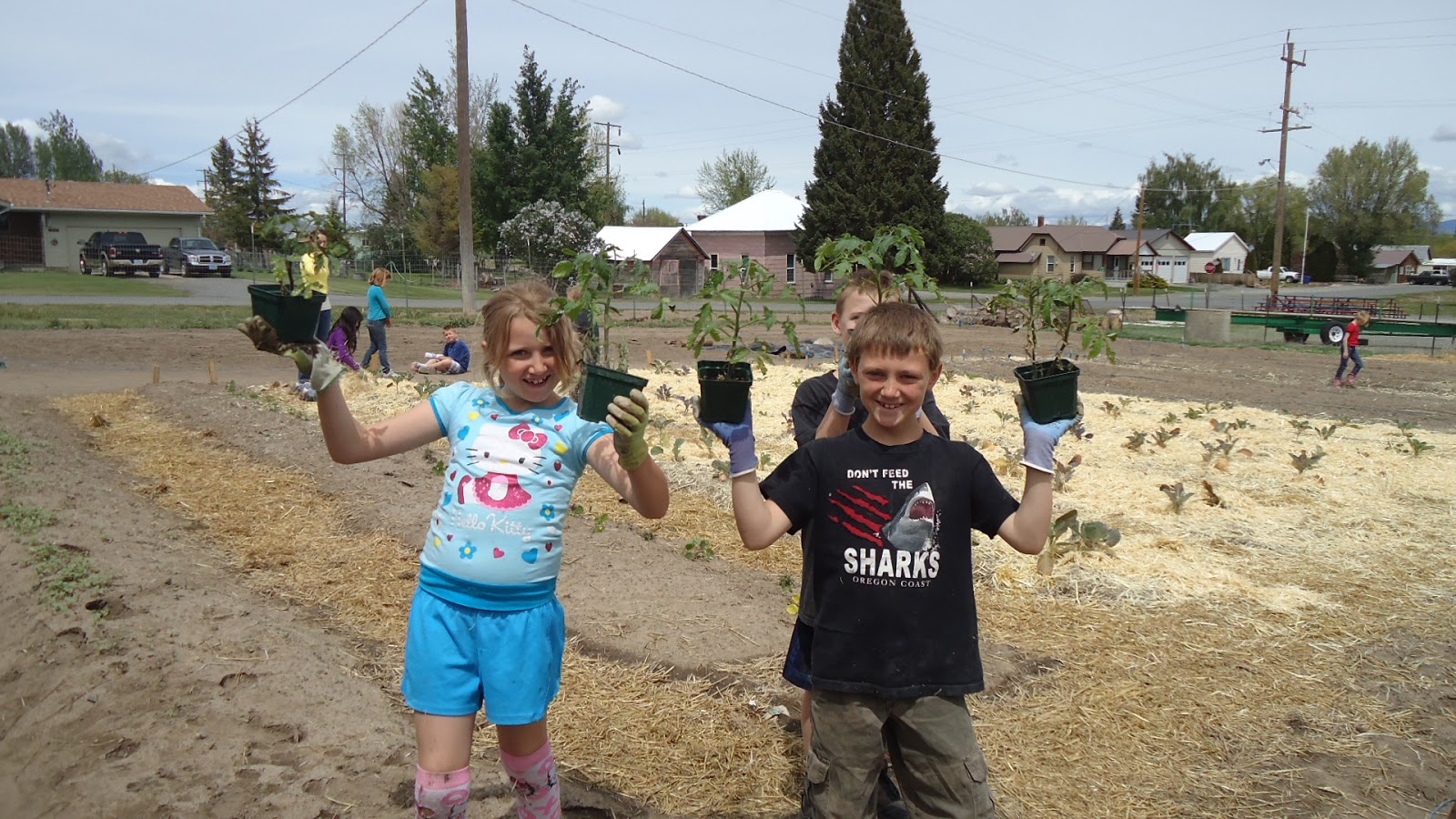Every morning when I first arrive
at the garden, I walk down the rows to see what has changed from the day before.
A tomato cage may have collapsed under the weight of the ripening fruits that
adorn it. A dark green zucchini has grown grotesque by doubling in size
overnight. Delicately purple potato blossoms keep bees and pollinators hovering
over the garden. Tendrils from the pumpkin patch have crept across the pathway
and threaten to take over the neighboring beds. During the many hours I’ve
spent here, I’ve observed the little quirks and habits that make this garden,
and this community, special,
Just like in an Indiana Jones movie, I’ve
learned where to dodge a mud puddle, skip over the prickly leaves of a squash
plant, and take shelter on a hot day next to the bed of herbs where the smell
of dill makes the heat a little more tolerable. I’ve seen the excitement of
summer-school students when I bring broccoli for their snack and noticed how
the town goes quiet when I wander the streets to find someone to relieve me of an
armful of zucchini.

Over the past year I’ve gotten to
know the town of North Powder pretty well, and what I’ve gained from this
community is as ample a harvest as the one I’ve gathered from the school garden.
The enthusiasm and passion that North Powder School met me with a year ago have
made the past twelve months as their FoodCorps Service Member an incredible
adventure. Serving with FoodCorps is as much about working with people as it is
with food, and here I have had the opportunity to collaborate with the broadest
spectrum of people I could have imagined. I’ve learned something from every
person that I’ve worked with, and I do not have adequate words for expressing
my gratitude to the people who have helped me develop my skills and pilot this
new adventure successfully.

In what I believed was going to be
an isolated and lonely town, I found a community that has whole-heartedly
embraced me. Although it is true that this part of the state has limited access
to the resources available in the Willamette Valley and that can be
frustrating, there is just as much enthusiasm, excitement and willingness to
learn about food. I've attended weekly dinner parties where I learned to cook Lebanese and Greek foods, parents proudly and randomly tell me what they cooked, and what their child ate, for dinner the night before, and I've had discussions in the classroom and in late-night bars about the details of raising chickens.
One of the most important lessons I’ve learned from my service is that every
community chooses its own pace and direction when it comes to food, and it has
been a delight for me to follow along as North Powder School helps define this
path for the region.

This week concludes my two years of
serving with FoodCorps. When I first started my career with food in Montana I
did not anticipate how much I would learn, the skills I would gain and the friends
I would make. I am saddened to think about no longer being an active member of
the FoodCorps family, but I know that the connections I’ve made will endure and
support me as I continue along this career path. This week when I pack up my
car, I will be heading back to Portland to be closer to my family and to look
for a job addressing sustainable agriculture and food justice.
 |
| The FoodCorps family |
In late August, North Powder will
welcome their new FoodCorps Service member, and I hope that the garden and the
Farm to School Program continue to flourish as she contributes her own skills
and strengths. I wish all the friends that I have made in Montana, eastern
Oregon and in FoodCorps across the country all the best as you continue to
change the world, one lentil burger at a time, and I look forward to watching
the world harvest what we have sown.
Hopefully you are not like me and don’t have dozens of zucchini plants
growing in your garden, but in case you suffer from an excess of squash here is
one of the recipes I’ve employed recently with delightful results.
 Zucchini Pancakes
Zucchini Pancakes
1 lb zucchini (approximately 2 medium sized)
1 tsp salt
2 green onions, thinly sliced
1 egg
¼ tsp black pepper, more to taste
½ cup flour
½ tsp baking powder
Olive oil, for frying
Grate the zucchini, toss with salt and set aside for 10 minutes. Drain
zucchini by wringing it out in cheesecloth or pressing against the edge of a
colander. Mix in green onions, egg and black pepper.
In separate bowl mix flour and baking powder, and then add to wet
mixture.
In a cast-iron skillet, heat olive oil over medium heat and drop batter
into pancakes, and flatten with spoon or spatula until about ½ inch thick.
These will take longer to cook than regular pancakes. Flip when the bottom
turns golden-brown, after about 4 minutes.
Topping:
1 cup sour cream or plain yogurt
1-2 Tbs lemon juice
1 minced clove of garlic
Mix ingredients together and serve a dollop on each pancake. The
pancakes were good before, but the topping definitely kept me eating more!
 |
| The Elkhorn Mountains |











